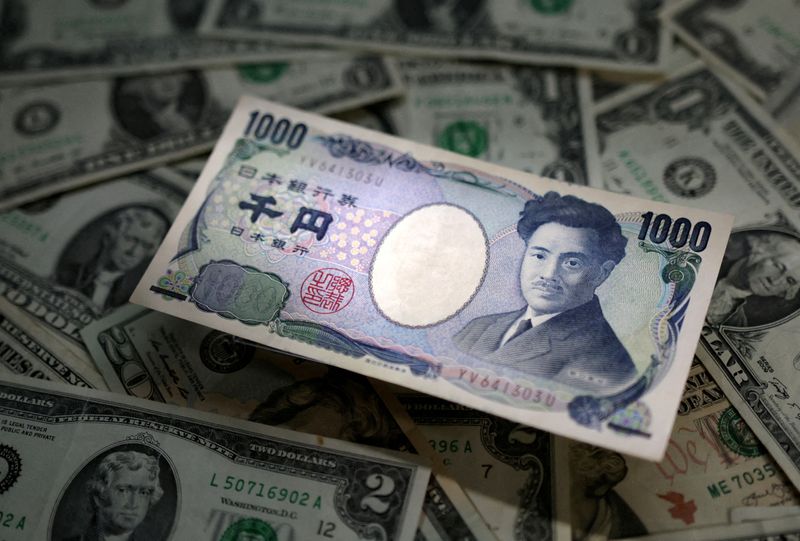 © Reuters. FILE PHOTO: Japanese Yen and U.S. dollar banknotes are seen in this illustration taken March 10, 2023. REUTERS/Dado Ruvic/Illustration/File Photo/File Photo
© Reuters. FILE PHOTO: Japanese Yen and U.S. dollar banknotes are seen in this illustration taken March 10, 2023. REUTERS/Dado Ruvic/Illustration/File Photo/File Photo
By Saqib Iqbal Ahmed
NEW YORK (Reuters) -The U.S. dollar rose against the yen on Tuesday after the Bank of Japan gave no sign that its ultra-loose monetary policy was set to end, but expectations for interest rate cuts next year continued to weigh against the greenback more broadly.
The Bank of Japan maintained its ultra-loose policy settings as expected, as it opted to await more evidence on whether wages and prices would rise enough to justify a shift away from massive monetary stimulus.
The central bank also made no change to its dovish policy guidance, dashing hopes among some traders it would tweak the language to signal a near-term end to negative interest rates.
"Traders are pulling back on a move into positive rate territory from the Bank of Japan into early new year," said Karl Schamotta, chief market strategist at Corpay in Toronto.
"There was no hint in the press conference or in the statement that policymakers are ready to move rates up dramatically," Schamotta said.
The dollar was 0.79% higher against the yen at 143.925 yen. Through Monday, the dollar had retreated about 3.7% against the yen this month, hurt by broad dollar weakness and also as traders stepped up yen-buying on speculation of a BOJ policy shift.
Meanwhile the dollar continued to struggle against most majors as traders sold the U.S. currency on expectations that the Federal Reserve is about to start cutting rates as early as March.
While Fed officials have pushed back against market expectations of how soon the Federal Open Market Committee (FOMC) could cut rates, those comments have done little to sway market pricing and stem the greenback's decline.
"We're going to maybe see a little bit of a rocky start to the year where people are going to try to sell dollars just on Fed expectations and as the Bank of England and ECB remain somewhat in the higher-for-longer camp, and EM assets continue to rally," Brad Bechtel, global head of FX at Jefferies in New York.
But the relative strength of the U.S. economy should insulate the dollar from further pronounced weakness, he said.
"In the U.S., maybe we slow a bit, but we don't go into recession. That's actually still pretty dollar positive," Bechtel said.
The dollar index, which measures the currency's strength against a basket of six rivals, was 0.30% lower at 102.18. The index has dipped 1.5% over the last week.
Chicago Fed President Austan Goolsbee on Monday said the Fed was not pre-committing to cutting rates soon or swiftly, and the jump in market expectations that it will do so was at odds with how the U.S. central bank functions.
A reading on the core Personal Consumption Expenditures (PCE) price index - the Fed's preferred measure of underlying inflation - is due this week, and may provide clarity on whether inflation has slowed enough for the Fed to begin easing policy next year.
The risk-sensitive Australian and New Zealand dollars sat around their highest in nearly five months, further beneficiaries of the softening dollar.
The Aussie was 0.78% higher at $0.6757, its highest since late July. Minutes from the Reserve Bank of Australia's December policy meeting showed on Tuesday that the bank considered hiking rates, but decided there were enough encouraging signs on inflation to pause for more data.The kiwi rose 0.85% to 0.62645.
The Canadian dollar strengthened to a four-and-a-half-month high against its U.S. counterpart as investors reduced bets on an early start to Bank of Canada interest rate cuts after domestic data showed inflation holding steady in November.
The pound rose 0.56%, helped by the dollar's broad weakness and as investors increasingly talked up sterling as a hot prospect for next year.
In cryptocurrencies, Bitcoin was about flat on the day at $42,365.

